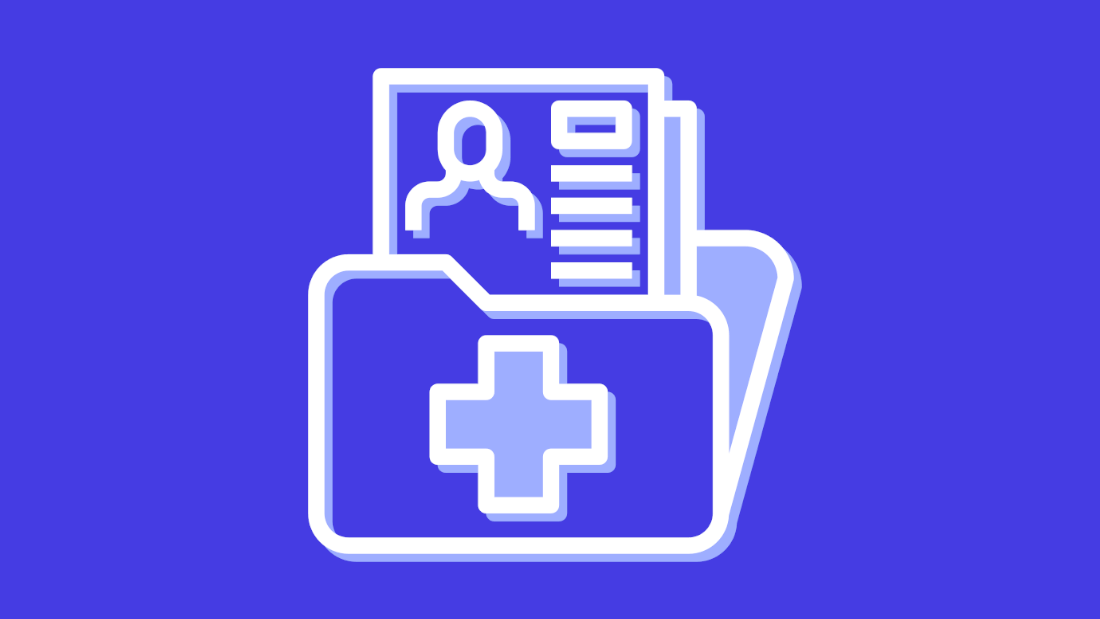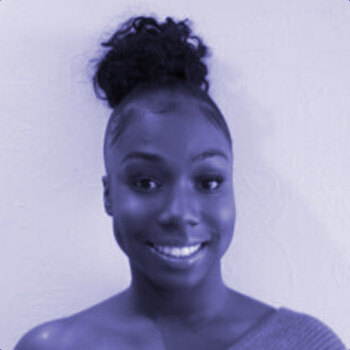I’ve been a UX researcher on healthcare projects in both the private and public sectors. There are some big differences between the two.
Like a lot of people at Sparck, I’ve had a ‘squiggly career’. The one thing all my roles have had in common is a connection to healthcare.
From the very start I knew I wanted to do something that would make a positive difference.
I explored ophthalmology before studying for a master’s degree in psychology and a bachelor’s degree in biochemistry.
Even though these are all distinct professions, together, they taught me a lot about how humans work.
Psychology has helped me understand human behaviour, including the fundamental truth that there’s always more than meets the eye. And biochemistry taught me how the body works, as well as a lot of useful medical language.
I first heard about user research as profession when I took a coding programme with CodeFirstGirls, a social enterprise that provides free training to women and non-binary people. Instantly, I felt as if UX research was the role I’d been searching for my whole life.
Healthcare isn’t just about the NHS
Since entering UX research I’ve had great opportunities to work with multidisciplinary teams on a range of public and private sector projects across industries.
For example, I’ve supported companies such as Facebook (Meta) to build new platforms, and helped public sector bodies such as Northern Ireland Direct better serve citizens.
In terms of healthcare specifically, my most recent experience has been driving social value with a private sector supplier of apps for GP surgeries. One app helps patients connect with surgeries to manage appointments and prescriptions while the other has helpful medical information, along the lines of WebMD. But these patient-facing products needed a rebrand.
I also supported work for a body representing privately-run community pharmacies around the adoption of the NHS booking and referral standards (BARs). How can pharmacies in neighbourhoods play a part in reducing pressure on primary and secondary care services by resolving minor health issues?
On the other side of the private-public divide, within the NHS, I was part of a team working on a high-profile NHS project, from discovery to private beta phase. Our task was to build a digital application form to support adults with parental responsibility in applying to manage their child’s GP services.
All these projects have similarities and differences when it comes to planning and managing user research.
Regulatory frameworks and ethical considerations
Public sector projects are underpinned by regulatory frameworks which rightly emphasise the importance of data privacy and consent for participants.
Private sector projects, however, are generally under less scrutiny, and a lighter regulatory burden.
So, if you’re committed to doing things properly, you might need to hunt around to find a process – or create one from scratch.
Recruiting research participants in healthcare
One challenge when building a healthcare service is that there may be multiple user groups such as both healthcare professionals and the general public who benefit from it and use it. And a bigger challenge as a user researcher is to make sure those latter voices are heard.
Regardless of the sector, researching with healthcare professionals is incredibly valuable – and rare. It can be hard to recruit them and get them to give up their time, as they are so busy on the front line, serving patients.
Private sector companies can at times have stronger relationships with healthcare professionals so recruitment can be easier.
From my experience, they may have a range of collaborative networking meetings with healthcare professionals to share their product vision.
This can serve as a successful research recruitment avenue and a great way to support snowball sampling. That’s where research participants help us identify other people we ought to speak to, which allows us to explore organic networks.
Also, analysing private sector dynamics, some of your colleagues may actually be healthcare professionals themselves. For example, I worked with a product designer who was also was a part time locum pharmacist.
This kind of thing was very common and was super helpful in getting input from subject matter experts, especially around how healthcare systems work.
Working with individuals with dual roles can mean certain product decisions are prioritised based on biases or personal agendas.
It’s your role as the researcher to be aware of this and to ensure your research considers diverse perspectives.
UX maturity
The private sector tends to have more financial resources and flexibility to invest in user research initiatives – if they want to, and understand its importance.
However, from my experience, and from discussions with other UXers, private sector firms often have poorly developed UCD teams, even though they may have built tons of products.
In my last role, in the private sector, I was the first UX researcher hired, even though there were already many designers and developers. My role was to support the UX research manager to advocate for research around the business and hire more team members.
As a user researcher working within the private sector, you’re not only conducting research but may also be actively mentoring the rest of the team to understand research. Be prepared!
However, within the public sector typically you may have a strong UCD team which actively champions user centricity and has a great understanding of the Double Diamond process, while also following a service manual for agile delivery.
It is important to remember, however, that generally public sector organisations are likely to have budget constraints and follow strict processes.
Problems with interoperability
One thing both sectors have in common is a lack of communication between IT systems and an inability to share data.
Healthcare systems rarely interact with one another and this is a major pain point for both service users and for those building healthcare services.
Patients do not think about healthcare services as ‘primary’ and ‘secondary healthcare providers’, however people working in that space might talk about them. Instead, they tend to think: “I really need to speak to a professional about something that’s worrying me.”
I’ve noticed within the private sector that organisations are good at building 10 different products with 1 feature each, when they could build 1 product with 10 features.
Health is emotive, sensitive and complex
With every project in healthcare I work on I learn more and find myself with more questions.
For example, it’s given me a strong interest in finding out more about empathic design while also challenging myself to be more inclusive in my research approach.
The topic of health can be a difficult one for many people, touching on a range of factors such as:
- previous experience with healthcare providers
- social class
- cultural differences
- stigma associated with their identity
These insights have only been unearthed as I focus on recruiting inclusively. We need to understand a range of patient experiences that may be different to our own if we’re going to improve patient outcomes for everyone.
That means making the effort to carry out research with people with accessibility needs, or from ethnically diverse backgrounds, or from across the LGBTQ+ spectrum. It shouldn’t be a ‘nice to have’, or about meeting arbitrary quotas.
In healthcare especially, access to services can make the difference between longer, happier lives, or shorter, more difficult ones.
One question I often ask myself is: “How can we design for underserved communities?” Because by doing that we’ll meet the needs of everyone else – including needs that are unspoken or only revealed when a solution is presented.
At times, you must balance user needs with business priorities. What is feasible, and what is within scope?
I’m keen to know if anyone else has observed such similarities or differences across the sectors from their own experience. And I’d love to chat with about inclusive research. So, please do connect with me on LinkedIn.
- Find out more about Sparck's work on design for health services
- Read more blog posts about healthcare design



